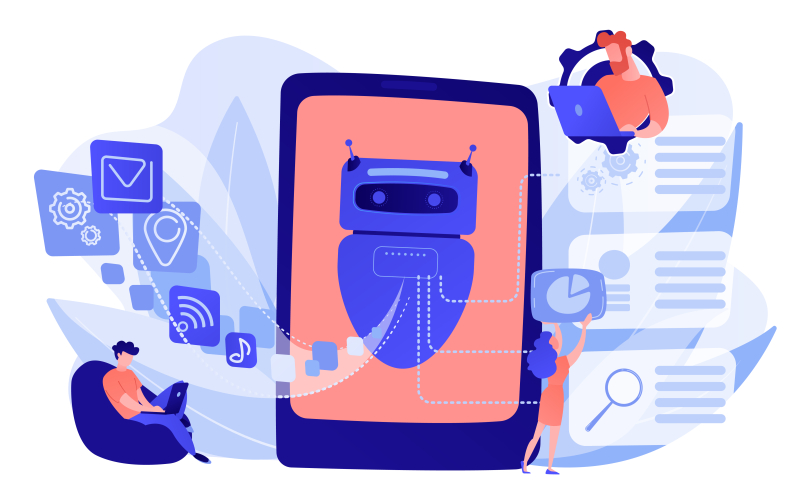AI and Machine Learning: Overview of New Technologies in February 2024

1. The Ascendancy of Multimodal AI Systems
Multimodal AI—capable of synthesizing and interpreting heterogeneous data formats such as text, imagery, audio, and video—leapt forward in complexity and utility.
Key Milestones:
- OpenAI enhanced GPT-4.5, enabling synchronous analysis and generation of text, visuals, and auditory inputs.
- Google DeepMind’s Gemini model redefined cross-modal interactions, particularly in healthcare and media applications.
Notable Applications:
- Automated video generation from textual cues.
- Integrated content analysis tools for e-commerce and digital advertising.
Impact:
These advancements amplify AI's adaptability, fostering interactions that are richer in context and intuitive across multifaceted platforms.
2. Generative AI Ventures into Video and 3D Realms
The frontier of generative AI has expanded from static imagery to the creation of high-fidelity video and three-dimensional assets.
Pioneering Technologies:
- Meta’s Make-A-Video 2.0 produces lifelike video sequences derived from natural language prompts.
- OpenAI’s 3DGen crafts intricate 3D assets, streamlining production pipelines for gaming and virtual environments.
Applications:
- Sophisticated video campaigns for marketing initiatives.
- Immersive 3D models for augmented and virtual reality.
Impact:
By accelerating creative workflows and slashing production costs, these innovations empower industries to embrace deeper immersion and visual storytelling.
3. Real-Time AI Thrives at the Edge
AI designed for edge computing—systems operating on devices rather than centralized servers—has become more agile and efficient.
Recent Breakthroughs:
- NVIDIA's Jetson Orin Nano emerged as an optimal platform for robotics and IoT.
- Qualcomm introduced AI accelerators enhancing on-device processing in smartphones, enabling enriched AR experiences.
Applications:
- Precision agriculture drones.
- Smart home devices with local AI processing, ensuring heightened privacy.
Impact:
These developments empower instantaneous decision-making while minimizing dependence on cloud infrastructures.
4. Healthcare’s AI Renaissance
The integration of AI into healthcare has surged, driving innovations in diagnostics and personalized medicine.
Significant Advances:
- Early detection algorithms utilizing genomic insights to identify rare conditions.
- Platforms leveraging machine learning to forecast treatment efficacy and drug interactions.
Applications:
- AI-enhanced imaging tools for cancer diagnostics.
- Virtual assistants aiding chronic disease management.
Impact:
These breakthroughs promise enhanced patient care through earlier interventions and tailored treatments, simultaneously reducing medical expenditures.
5. Ethical AI and Bias Mitigation
The crusade for equitable AI systems has intensified, with new tools emerging to tackle bias and improve transparency.
Key Innovations:
- IBM and Google’s fairness toolkits, which scrutinize datasets for implicit biases.
- Explainable AI frameworks offering transparent insights into algorithmic decision-making.
Applications:
- Fairer AI algorithms in recruitment processes.
- Transparent AI usage in sensitive domains like finance and healthcare.
Impact:
By fostering trust and aligning with global compliance standards, these tools pave the way for responsible AI deployment.
6. AI-Infused Robotics Redefine Industries
AI continues to bolster robotics, enabling sophisticated learning and adaptability in automated systems.
Technological Milestones:
- Boston Dynamics integrated predictive maintenance via advanced AI models in industrial robots.
- OpenAI unveiled an API for embedding generative AI within robotic workflows.
Applications:
- Warehouse automation with adaptive capabilities.
- Humanoid robots designed for caregiving and customer interactions.
Impact:
These innovations enhance operational efficiency and redefine productivity paradigms in manufacturing and logistics.
7. Sophistication in Natural Language Processing
Natural language processing (NLP) systems have become more adept at grasping contextual depth and emulating human-like interactions.
Key Developments:
- Multilingual models with real-time translation and higher accuracy.
- Conversational AI that perceives emotional subtleties and adjusts tone accordingly.
Applications:
- AI chatbots delivering tailored customer support.
- Sentiment analysis tools monitoring social media landscapes.
Impact:
NLP advancements bolster communication channels, enhancing client satisfaction through prompt and empathetic responses.
8. Federated Learning: A Privacy-First Approach
Federated learning, an innovative model training method preserving data privacy, gained traction across industries.
Noteworthy Progress:
- Secure collaboration frameworks facilitating cross-organization AI model training without sharing raw datasets.
- Healthcare’s adoption of federated learning to advance multi-institutional research.
Applications:
- Financial models ensuring data confidentiality.
- Collaborative cancer research initiatives utilizing distributed datasets.
Impact:
This approach nurtures innovation while safeguarding sensitive information, fostering trust across domains.
9. AI for Climate Sustainability
AI’s role in addressing environmental challenges has expanded, offering tools for climate monitoring and sustainability efforts.
Applications:
- Algorithms monitoring deforestation and wildlife habitats in real-time.
- Predictive models for weather patterns and natural disaster risks.
Impact:
By aiding conservation and preparedness efforts, AI supports sustainable development and ecological resilience.
10. Hyper-Automation with AI
Hyper-automation, a paradigm leveraging AI to streamline operations, has become a cornerstone for businesses seeking efficiency.
Breakthroughs:
- Robotic process automation (RPA) combined with AI for intelligent decision-making.
- Tools automating workflows in sectors like finance, HR, and supply chain management.
Applications:
- Automated document processing for regulatory compliance.
- Streamlined inventory systems in e-commerce.
Impact:
This trend revolutionizes enterprise scalability, driving cost efficiency and operational agility.
Conclusion
February 2024 showcased a tapestry of AI and ML innovations reshaping industries and addressing intricate challenges. From multimodal AI to hyper-automation, these developments herald a future brimming with opportunity, redefining the boundaries of possibility in both professional and personal spheres.






